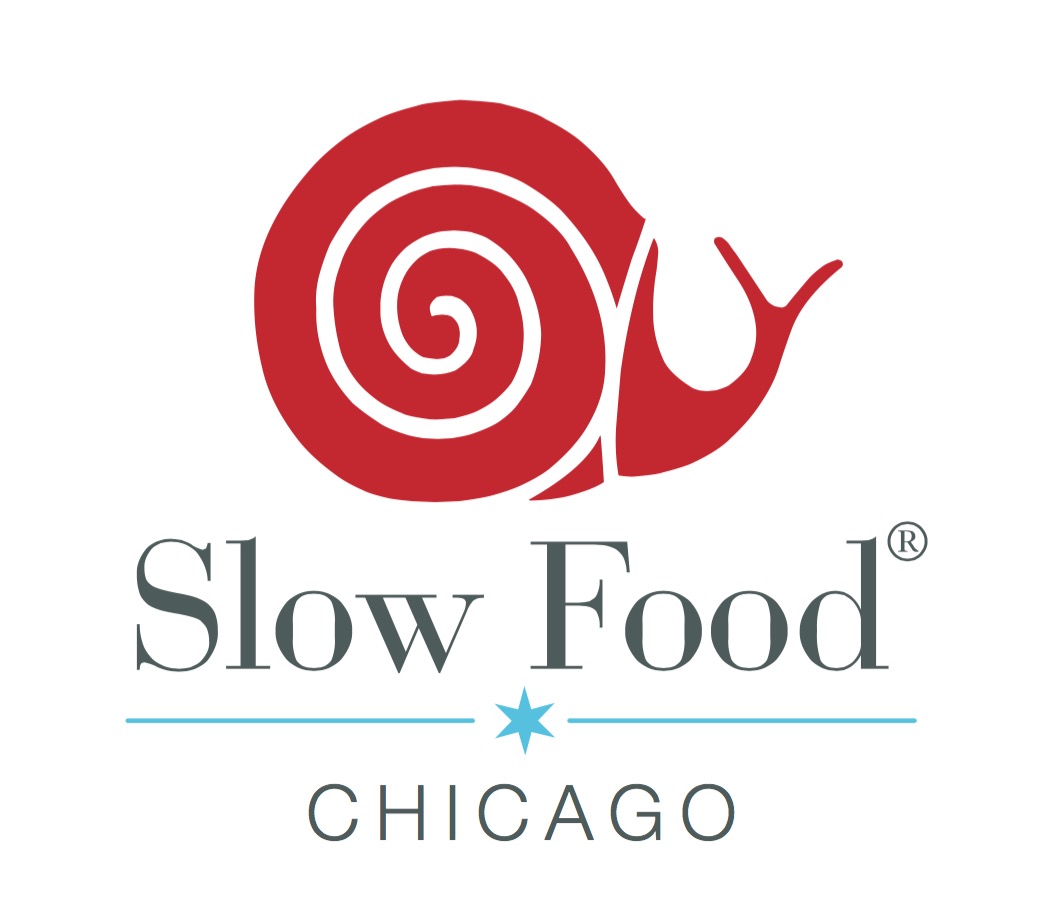An End of Summer Tomato Recipe
/Looking for a recipe to use up the last bits of tomatoes you gathered from the farmers market last weekend? The following recipe was created by Chef Katie Simmons. You can find heirloom varieties of tomatoes (like these Ark of Taste Sudduth Strain Brandywine tomatoes) at your local farmers market. These tomatoes were gathered from the Nichols Farm stand at the Lincoln Park Green City Market. I don't know about you, but after all the deliciousness that was enjoyed this past weekend at the Farm Roast, I can't wait to get back in kitchen and cook up some everlasting tastes of summer before it slips away.
These tomatoes are one of the many unique foods in danger of extinction. One of the best ways to help prevent this from happening, is to eat them! By eating heirloom varieties and ingredients, livestock and dishes from the ark of taste catalog, you are encouraging producers to grow/raise them - and chefs to incorporate them into their menus. You can learn more about Ark of Taste, the Slow Food movement and what you can do to actively save these ingredients at: Slow Food USA.
BRANDYWINE TOMATOES STUFFED WITH GREEK CAULIFLOWER "RICE"
Juicy Brandywine tomatoes are one of the best-tasting heirloom tomatoes, with an intense, deep flavor. They make the perfect vehicles for this classic vegetarian Greek recipe. In this healthful, gluten-free version, cauliflower replaces traditional rice. It's a true vegetarian delight!
Servings: 4 Ready In: 20 minutes Yield: 8 tomatoes
Photo courtesy of Katie Simmons. Source : PlantsRule.com
INGREDIENTS
8 medium Sudduth Strain Brandywine tomatoes
1 medium head cauliflower
1 small onion
1 tsp dried oregano
1/4 cup pine nuts
2 Tbsp currants
1 bunch parsley, chopped
1/4 tsp salt
1/8 tsp black pepper
DIRECTIONS
-Gather ingredients.
-To prepare the tomatoes: Working over a medium bowl, use a large spoon to scoop out the seeds and ribs. Remove as much of the juices and seeds as you can, into the bowl. Place the scooped out tomatoes aside.
-To make the Cauliflower "Rice" Stuffing : trim the green leaves off the cauliflower and roughly cut into large chunks. Set up the grater blade on your food processor, with the wider holes facing up. Place the cauliflower in the opening of the food processor and run through the grater. In a wide pan, toast the pine nuts over medium-low heat 3-5 minutes, just until golden brown. Remove from the heat and place in a large mixing bowl.
-Place the grated cauliflower into the pan, along with the oregano. Saute over medium heat, 5-7 minutes, just until the cauliflower softens and starts to stick to the bottom of the pan. Stir often to prevent burning. Remove the cauliflower from the pan, adding to the mixing bowl with the pine nuts. Return the pan to the heat.
-Peel and dice the onion. Roughly chop the scooped out tomato ribs. Add the chopped tomato and diced onion to the pan. Cook, partially covered, over medium-high, until the onion is translucent, about 5 minutes. Remove the lid and cook off the excess juices for another 3-4 minutes. The tomato onion mixture should have just a little bit of juice, but the onions and tomatoes should be completely soft. Use a spatula to break up any large tomato chunks.
-Roughly chop the parsley.
-In the large mixing bowl, combine the toasted pine nuts, cauliflower "rice", tomato onion mixture, chopped parsley, currants, salt, and pepper. Stir well to combine and taste to adjust seasoning.
-Fill each of the tomatoes with the Cauliflower "Rice" mixture. Use your hands to really compact the mix as tightly as you can. Serve and enjoy!
Chef's Tips: These taste delicious served slightly warm or at room temperature. If served too hot, the fresh flavor of the tomatoes gets lost. You can also make these with short grain brown rice or quinoa.
Photo courtesy of Katie Simmons. Source : PlantsRule.com














